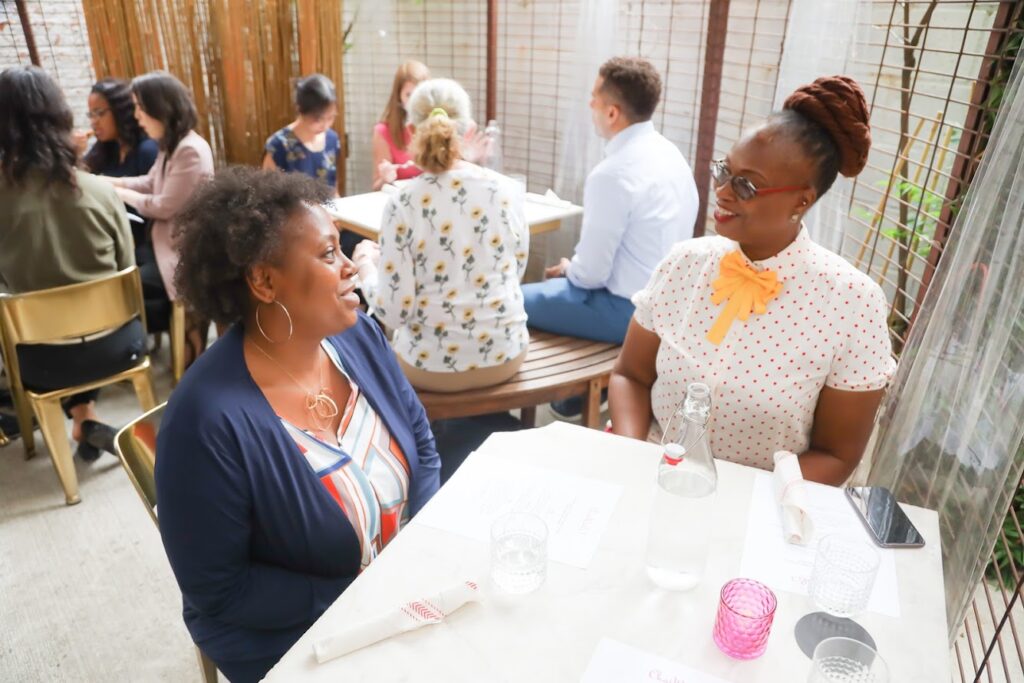( ENSPIRE She Did That ) LISC Executive Valerie White Creates One Million Dollar Recovery Fund for Minority-Owned Businesses and Brings Attention to New York’s Growing Racial Wealth Gap
ENSPIRE Contributor: Bella Rothman
New York’s well-known diverse population leaves some non-New York natives surprised the city is home to a major racial wealth gap. Heightened by the pandemic, small minority-owned businesses suffered significantly in 2020 and needed the support of their communities. This year, executive director of LISC (Local Initiatives Support Corporation), Valerie White, used her decades of business world experience to create a one million dollar fund for minority-owned small businesses recovery. White continues to emphasize how crucial it is to finally address the city’s growing racial wealth gap by creating the funds and awareness to do so.
Valarie White has also held the position of Vice President at Empire State Development where she worked to provide grants, loans, tax credits, and more with one of New York’s well-known public-benefit corporations. Similarly, she worked as executive director of the ESD Division Minority and Women Business Development. With years of experience, she has now continued her work with all five boroughs amid a global crisis providing several businesses with the financial resources they need.

ENSPIRE talked to Valerie about her position at LISC, the racial wealth gap in New York, and how the recovery fund came about.
What motivated and inspired you to create this fund?
Minority-owned small businesses have been financially devastated by the COVID-19 pandemic. These businesses are, of course, facing unprecedented economic challenges and uncertainty like most small business communities. Still, minority-owned businesses are also grappling with a history of systemic inequities and disadvantages that have long left them without the foundation that most businesses depend on to sustain themselves. Having decades-worth of experience working with minority entrepreneurs and business owners, we knew that the city, the non-profit community, and neighborhood service providers would need to go above and beyond to prevent the majority of these businesses from closing, which is why LISC NYC developed a Small Business Relief and Recovery Fund that provided more than $1.1. million in direct financial relief to 112 minority-owned small businesses, along with another $2 million in grants to nearly 90 additional businesses as well.
What do we, as citizens need to do to help close the racial wealth gap?
We need to be committed to precisely looking at the system inequity and unapologetically working to address them. Like anything else in life, the only way to counteract a problem is to address its root cause directly. In this case, the racial wealth gap has been built into our system, which will require a systemic and deliberate approach to close it fully.
Our elected officials and decision-makers can do much to address the racial wealth gap head-on, but as citizens, the most important thing that we can all do is hold ourselves and those around us accountable. In addition, it’s critical that we live by the concepts of diversity and inclusion – both in our professional and personal lives – which will play an important role in bridging this debilitating divide.
Are there problems with the racial wealth gap that are more specific to New York? If so, what are they?
Historic redlining in New York City has left many of our Black, brown, and Latino communities without access to the resources, infrastructure, employment opportunities, and networks that most individuals rely on to build their lives, families, and futures. Whether it be inequity in healthcare, lack of access to affordable housing options, or the digital divide, among many other common threads of inequity, these pervasive challenges are most apparent in the neighborhoods that fell victim to the systemic marginalization that was redlining.
How can our leaders help support and repair minority-owned small businesses? How can they work to close the racial wealth gap?
Minority-owned businesses need immediate and direct support in the form of grants to allow them to continue to serve as the economic, cultural, and social backbone of BIPOC communities across the city. Supporting the recovery of this marginalized business community will require coordinated efforts to strategically and deliberately grow funding and programmatic investment in these businesses. That also means our leaders must build meaningful partnerships between government and community-based non-profits to help nurture long-term avenues of support that connect businesses to the resources, services, and programming that will empower these communities. Our government leaders need to recognize that non-profit community-based partners often make up the foundation on which commercial corridors in Black and brown neighborhoods rely – constantly working to provide technical know-how, financial support, and the networks needed to sustain and grow minority businesses who often don’t have the longtime institutional relationships that most businesses depend upon.
Providing the means necessary for minority-owned businesses to survive the pandemic, and continue to grow and thrive into the future, is an essential component of closing the racial wealth gap. Likewise, however, developing financial relief programs with reliable and sustainable infrastructure for the minority-owned small business community. Of course, financial relief is desperately needed in the immediate term. Still, this relief can only go so far if these businesses don’t have access to the infrastructure needed to run a business in the 21st century.
For instance, even before the pandemic, business and commerce became increasingly intertwined in the digital world. However, many BIPOC communities in New York City lack access to quality and affordable broadband, which puts minority-owned businesses, who call these communities home, at a significant competitive disadvantage. Our elected leaders can address this inequity through deliberate and thoughtful public policy that only exacerbates the digital divide and makes it harder to do business as a Black, brown, or Latino New Yorker.
Similarly, ownership and asset building have been the backbone of wealth accumulation for centuries, and Black and brown individuals have systemically been neglected the opportunity to acquire ownership. However, there are proven and effective measures that we can enact to help minority New Yorkers become homeowners and business owners, and our elected leaders must build more opportunities that lead to ownership in BIPOC communities, which will, in turn, jumpstart the process of growing generational wealth.
How were you able to create such a large fund for housing, business development, and health? How did you spread your message, and how did you succeed?
We relied heavily on the community partnerships that LISC NYC and its senior leaders have forged over the course of decades, working with institutions, businesses, and organizations that care about the future of the city’s minority-owned small business community and closing the racial wealth gap. We worked around the clock to raise funds necessary to provide meaningful relief to these businesses and then worked directly with community-based partners to deploy the funds directly to the owners of minority businesses who needed it the most. As with any successful initiative, it takes a village. Nevertheless, LISC NYC is exceedingly proud to have delivered more than $13 million in PPP loans to NYC non-profits and small businesses in the most vulnerable communities, and an additional $3.2 million in grants deployed directly to more than 180 small businesses, preserving almost 900 jobs in NYC and providing long-term technical support that will allow these businesses to grow into the future.
In addition to the financial relief provided directly to minority-owned small businesses, so far in 2021 alone, LISC NYC has invested more than $21 million in the city’s affordable housing stock, most recently closing a $9.6 million construction financing deal for three buildings of affordable housing in one of New York City’s most unaffordable neighborhoods. In the midst of the public health crisis, we have also prioritized advancing health equity programs that improve health outcomes in low-income minority communities, particularly as we continue to grow our partnerships with community health institutions to develop asthma prevention and tracking programs.
What are some things you have learned?
There is so much that individuals and community organizations can do to build and grow the economic and social conditions that allow Black-, brown-, and Latino-owned businesses to thrive. For instance, we hear time and again from the businesses who received grant support through the LISC NYC Small Business Relief and Recovery Fund that as a result of the financial relief they received, the grantees were, in turn, able to provide a lifeline to other the minority-owned businesses surrounding them. The minority-owned small business community is a thriving ecosystem of diverse businesses and individuals, but it’s one that’s committed to building everyone up together. It’s inspirational, and it’s what’s going to allow these businesses to come back stronger than ever once they receive the immediate financial relief needed to sustain their operations.

Valerie White’s $1M small business relief fund has supported over 100 minority-owned businesses in the past year. She continues to head $3.1B programs to support business development, affordable housing, and jobs in poor economic neighborhoods. White feels passionate about acknowledging the difference in wealth privilege among New York businesses and using her place as a female minority executive to call attention to these issues.
LISC NYC Website: Home | Local Initiatives Support Corporation (lisc.org)
Related Article: Transforming Fitness For Bronx Residents With Peloton’s Support – ENSPIRE Magazine







